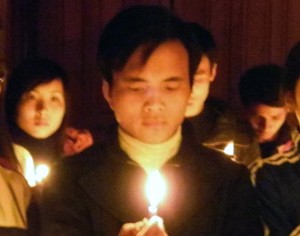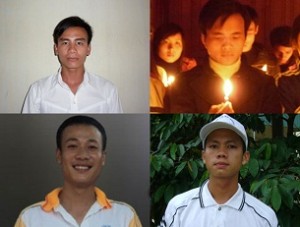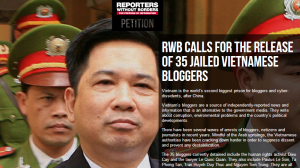Dismissing its neighbours’ pleas, impoverished Laos is rapidly building a Mekong River dam that threatens fisheries crucial to millions of Southeast Asia’s poorest people.
The site of the Don Sahong dam, less than two kilometres from the Lao-Cambodian border, is in an area famous for spectacular waterfalls and deep pools that is among the few habitats of the endangered Irrawaddy dolphin.
A “coffer dam” blocks one of the Mekong’s main channels to allow construction of the hydropower project, which will suck in as much as half of the river’s water during the dry season.
Landlocked Laos is Southeast Asia’s poorest state, and all its neighbours far exceed its population of seven million. But by virtue of geography and burgeoning Chinese influence, its secretive authoritarian leaders wield huge, unaccountable power over a 4,800-kilometre-long river that begins in Tibet and winds through six countries before emptying into the South China Sea.
China has built six dams on its stretch of the Mekong since the mid-1990s, and Laos plans nine. Many dams have been built on Mekong tributaries as well, and dozens more are planned.
Experts say they are already damaging the world’s largest inland fisheries and degrading a rice bowl delta that helps feed Cambodia and Vietnam, the two countries farthest downstream. Even building a few dams on the lower Mekong will dramatically compound the damage to a river basin that 60 million people rely on, according to scientific models of dam impacts.
The Don Sahong dam “is like a one-tonne bomb above us,” said Phoy Vanna, a tourist boat owner and father of 10 who has joined hundreds of other Cambodian villagers in protests.
“I cannot predict the future of my children,” he said. “Now we have a job and we can survive because tourists come to visit.”
The rest of Southeast Asia is powerless to stop Laos.
Under an international agreement on protecting the Mekong, the country is obliged only to consult its neighbours through the Mekong River Commission.
Its neighbours’ positions are also complicated by commercial ties. Thai, Chinese and Malaysian companies are building dams in Laos and power companies in Thailand and Vietnam plan to buy the electricity.
Early in 2015, Thailand, Cambodia and Vietnam all requested that Don Sahong be delayed to give more time to study its possible effects. That flurry of official communications was already in vain. A day after Bangkok sent its letter stamped “urgent,” Laos informed its neighbours through the commission that it was “pleased” to bring consultations with them to a close.
Don Sahong could be especially damaging because it blocks the major route for fish migrations crucial to replenishing the region’s interconnected fisheries. The Mekong has many channels in the area but the others are largely blocked to upstream migrations by rapids and waterfalls.
For all that danger, the dam will have only a small power capacity: 256 megawatts. Laos has said the power will help fuel development in the south of the country. Overall, its plans for nine hydro dams call for exporting most of the electricity to Thailand and Vietnam, providing 12 per cent of Thailand’s future power and about four per cent of Vietnam’s.
“The government has told us that to build this dam is to develop the country,” said Sith Mok, an 18-year-old Lao woman who sells soft drinks and snacks to Western tourists. “Nobody could dare to challenge the government about building this project.”
Laos says new routes for fish to swim upriver have been created by deepening an inlet and blasting rapids. In an environmental impact study that did not consider effects on neighbouring countries, Laos says the mitigation measures will protect fisheries. Malaysia’s Mega First, which is overseeing construction of the dam but has no experience in hydropower, has repeated those assertions.
The company is conducting a 10-year study on the effectiveness of mitigation measures, but final results won’t be available until long after the dam is built. It has contracted China’s SinoHydro Corp to build the dam for $US320 million ($A420.33 million).
A Mega First spokeswoman declined to provide any data. The office of the Lao prime minister, the natural resources ministry and the Lao members of the Mekong River Commission did not respond to requests for comment.
“We don’t know what the claims that things will be fine are based upon. This is unacceptable considering the high stakes,” said Ian Baird, a geography professor at the University of Wisconsin-Madison who studies Mekong fisheries. “If the measures don’t work well, it will be too late to undo the damage and there will be regional implications for food security and biodiversity.”
Research indicates the combined effect of planned Mekong dams would be devastating, turning much of the lower Mekong into sterile lakes.
Most recently, a study for Vietnam by Danish water consultancy DHI predicted Mekong Delta rice production would drop steeply because the dams would trap sediments, reducing nutrients flowing downstream.
The study predicts annual fishery and farming losses of more than $US760 million in Vietnam and $450 million in Cambodia, the two worst affected countries. The incomes of fishing and farming villages in both countries would fall by half.
With Don Sahong, Laos followed a pattern established five years earlier when it went ahead with the Xayaburi dam in northern Laos over the objections of neighbouring countries. It also is preparing to build the Pak Beng dam near the border with northern Thailand, photographs taken by a river activist show.
Philip Hirsch, a professor of human geography at Sydney University, said China’s Mekong dam-building and burgeoning regional influence have emboldened Laos.
For one, the Chinese dams have altered the ebb and flow of a monsoonal river, raising dry-season water levels and making downstream hydro development more viable. Second, China’s influence has made Laos’ ruling communist party less dependent on Vietnam, the country that will be worst affected by Mekong dams.
“The Lao government claims to see no reason why it should hold back on developing a shared river when China is already doing so,” Hirsch said.
Several Mekong dams have also been proposed in Cambodia. One on a tributary would cause Mekong fish stocks to drop nine per cent, according to a study in the Proceedings of the National Academy of Sciences.
The effects of existing Chinese dams are apparent to many across the Mekong from Laos in the sleepy northern Thailand town of Chiang Khong, which once bustled with hundreds of fishing boats. Now it’s mainly a point for petty border trade and for backpackers on their way to Luang Prabang, the old Lao royal capital.
More than a decade ago, a day’s catch could be 10 or more kilograms. Today, it’s one or two kilograms or often nothing. Some species of fish have gone altogether. Fishing as a main livelihood has almost disappeared.
(The article posted on https://au.finance.yahoo.com/news/thirst-mekong-dams-imperil-fisheries-040114353.html)
Height Insoles: Hi, I do believe this is an excellent site. I stumbledupon …
http://fishinglovers.net: Appreciate you sharing, great post.Thanks Again. Keep writi…
Achilles Pain causes: Every weekend i used to pay a quick visit this site, as i w…






August 17, 2016
Thirst for Mekong dams imperil fisheries
by Nhan Quyen • [Human Rights]
Mekong Delta, the biggest Vietnamese granary, suffers severe drought this year
AAP- August 16, 2016
Dismissing its neighbours’ pleas, impoverished Laos is rapidly building a Mekong River dam that threatens fisheries crucial to millions of Southeast Asia’s poorest people.
The site of the Don Sahong dam, less than two kilometres from the Lao-Cambodian border, is in an area famous for spectacular waterfalls and deep pools that is among the few habitats of the endangered Irrawaddy dolphin.
A “coffer dam” blocks one of the Mekong’s main channels to allow construction of the hydropower project, which will suck in as much as half of the river’s water during the dry season.
Landlocked Laos is Southeast Asia’s poorest state, and all its neighbours far exceed its population of seven million. But by virtue of geography and burgeoning Chinese influence, its secretive authoritarian leaders wield huge, unaccountable power over a 4,800-kilometre-long river that begins in Tibet and winds through six countries before emptying into the South China Sea.
China has built six dams on its stretch of the Mekong since the mid-1990s, and Laos plans nine. Many dams have been built on Mekong tributaries as well, and dozens more are planned.
Experts say they are already damaging the world’s largest inland fisheries and degrading a rice bowl delta that helps feed Cambodia and Vietnam, the two countries farthest downstream. Even building a few dams on the lower Mekong will dramatically compound the damage to a river basin that 60 million people rely on, according to scientific models of dam impacts.
The Don Sahong dam “is like a one-tonne bomb above us,” said Phoy Vanna, a tourist boat owner and father of 10 who has joined hundreds of other Cambodian villagers in protests.
“I cannot predict the future of my children,” he said. “Now we have a job and we can survive because tourists come to visit.”
The rest of Southeast Asia is powerless to stop Laos.
Under an international agreement on protecting the Mekong, the country is obliged only to consult its neighbours through the Mekong River Commission.
Its neighbours’ positions are also complicated by commercial ties. Thai, Chinese and Malaysian companies are building dams in Laos and power companies in Thailand and Vietnam plan to buy the electricity.
Early in 2015, Thailand, Cambodia and Vietnam all requested that Don Sahong be delayed to give more time to study its possible effects. That flurry of official communications was already in vain. A day after Bangkok sent its letter stamped “urgent,” Laos informed its neighbours through the commission that it was “pleased” to bring consultations with them to a close.
Don Sahong could be especially damaging because it blocks the major route for fish migrations crucial to replenishing the region’s interconnected fisheries. The Mekong has many channels in the area but the others are largely blocked to upstream migrations by rapids and waterfalls.
For all that danger, the dam will have only a small power capacity: 256 megawatts. Laos has said the power will help fuel development in the south of the country. Overall, its plans for nine hydro dams call for exporting most of the electricity to Thailand and Vietnam, providing 12 per cent of Thailand’s future power and about four per cent of Vietnam’s.
“The government has told us that to build this dam is to develop the country,” said Sith Mok, an 18-year-old Lao woman who sells soft drinks and snacks to Western tourists. “Nobody could dare to challenge the government about building this project.”
Laos says new routes for fish to swim upriver have been created by deepening an inlet and blasting rapids. In an environmental impact study that did not consider effects on neighbouring countries, Laos says the mitigation measures will protect fisheries. Malaysia’s Mega First, which is overseeing construction of the dam but has no experience in hydropower, has repeated those assertions.
The company is conducting a 10-year study on the effectiveness of mitigation measures, but final results won’t be available until long after the dam is built. It has contracted China’s SinoHydro Corp to build the dam for $US320 million ($A420.33 million).
A Mega First spokeswoman declined to provide any data. The office of the Lao prime minister, the natural resources ministry and the Lao members of the Mekong River Commission did not respond to requests for comment.
“We don’t know what the claims that things will be fine are based upon. This is unacceptable considering the high stakes,” said Ian Baird, a geography professor at the University of Wisconsin-Madison who studies Mekong fisheries. “If the measures don’t work well, it will be too late to undo the damage and there will be regional implications for food security and biodiversity.”
Research indicates the combined effect of planned Mekong dams would be devastating, turning much of the lower Mekong into sterile lakes.
Most recently, a study for Vietnam by Danish water consultancy DHI predicted Mekong Delta rice production would drop steeply because the dams would trap sediments, reducing nutrients flowing downstream.
The study predicts annual fishery and farming losses of more than $US760 million in Vietnam and $450 million in Cambodia, the two worst affected countries. The incomes of fishing and farming villages in both countries would fall by half.
With Don Sahong, Laos followed a pattern established five years earlier when it went ahead with the Xayaburi dam in northern Laos over the objections of neighbouring countries. It also is preparing to build the Pak Beng dam near the border with northern Thailand, photographs taken by a river activist show.
Philip Hirsch, a professor of human geography at Sydney University, said China’s Mekong dam-building and burgeoning regional influence have emboldened Laos.
For one, the Chinese dams have altered the ebb and flow of a monsoonal river, raising dry-season water levels and making downstream hydro development more viable. Second, China’s influence has made Laos’ ruling communist party less dependent on Vietnam, the country that will be worst affected by Mekong dams.
“The Lao government claims to see no reason why it should hold back on developing a shared river when China is already doing so,” Hirsch said.
Several Mekong dams have also been proposed in Cambodia. One on a tributary would cause Mekong fish stocks to drop nine per cent, according to a study in the Proceedings of the National Academy of Sciences.
The effects of existing Chinese dams are apparent to many across the Mekong from Laos in the sleepy northern Thailand town of Chiang Khong, which once bustled with hundreds of fishing boats. Now it’s mainly a point for petty border trade and for backpackers on their way to Luang Prabang, the old Lao royal capital.
More than a decade ago, a day’s catch could be 10 or more kilograms. Today, it’s one or two kilograms or often nothing. Some species of fish have gone altogether. Fishing as a main livelihood has almost disappeared.
(The article posted on https://au.finance.yahoo.com/news/thirst-mekong-dams-imperil-fisheries-040114353.html)